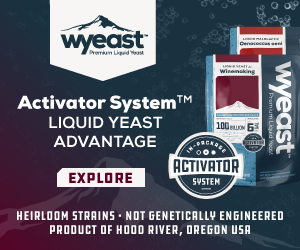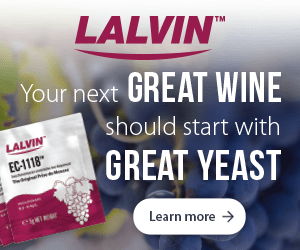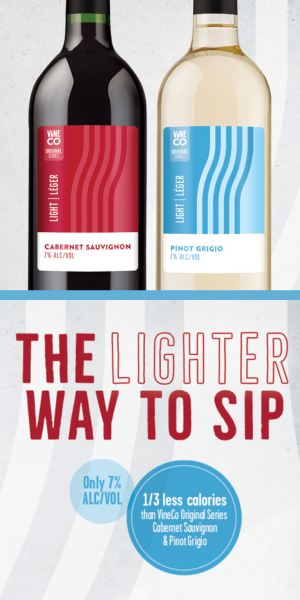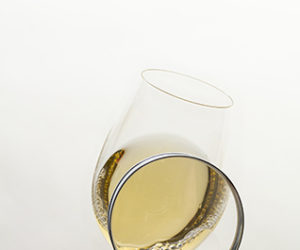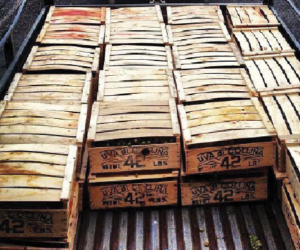In today’s changing world, we are seeing increased demand for grape varieties that are more disease- and climate change-resistant, and less chemical-dependent. Hybrid grapes, a crossing of European Vitis vinifera and indigenous North American or Asian varieties, are increasingly being developed and used to produce wines in areas facing climactic or disease challenges that make vinifera growing very difficult. The intent of these cross-breeding programs is to capture the positive winemaking characteristics of the vinifera parents and the climate-adapted disease-resistance of the indigenous parents.
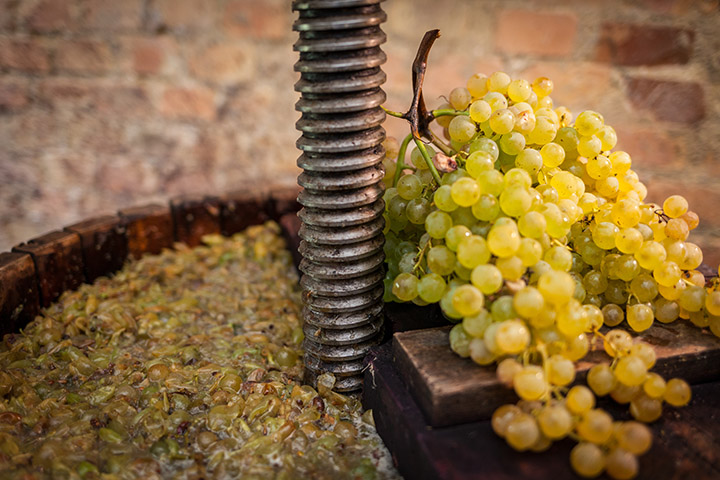
As a home winemaker in the early 2000s in Montreal, Quebec, I wanted to buy grapes closer to the source than the imported grapes I was getting from faraway California and Chile. This led me to explore grapes available from Quebec, the Ottawa Valley, Finger Lakes, New York, and Niagara, Ontario. Our home winemaking club found hybrid grape growers were often more open to working with home winemakers and offered prices that made the hobby accessible.
As a commercial winegrower all these years later, I appreciate the reduced fungal spraying, easier ripening, and higher crop loads that hybrid grapes can offer. In the face of climate change, the resistance to drought and extremes of cold and heat many hybrids offer is also highly valuable.
There are three main camps of hybrid grapes, and red and white table wines are the most common wines made from them. My previous article “Red Hybrid Grape Winemaking” covered red hybrids, and this article will focus on white table wines. The dominant hybrid grape categories are fungal-resistant (PIWI), cold-tolerant, and those resistant to Pierce’s or similar pathogenic diseases. Here we will outline winemaking strategies common to all of these camps with notable differences highlighted.
Harvest and Crush
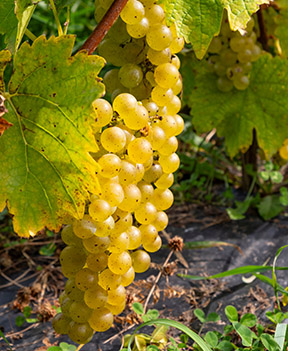
The decision on when to harvest is one of the hardest to make, but it has the potential to have a major impact on the character of the wines you choose to make. Many hybrids such as Vidal Blanc have thick skins that impart natural resistance to fungal rot and the impact of late-season rains. The open cluster structure of many hybrids also helps in this regard. These traits reduce the risk of late-season crop loss and give a broader window to harvest timing. With many varieties, prolonging hang time can help reduce acid levels and enhance varietal flavors through phenolic maturity.
You must have some awareness of the idiosyncrasies of the grape you are working with and watch all of the parameters of the grapes. Waiting long enough to drop acid levels when working with a grape such as Frontenac Gris could see the grapes hit 26 °Brix of sugar while still holding 12 g/L (1.6 oz./gallon) of acidity. It would be challenging to make a dry white table wine at that level of potential alcohol. You may not hit textbook numbers, so it is important to take a pragmatic approach to achieving harvest balance. In the case of that Frontenac Gris, I would likely choose to pick at a reasonable level of potential alcohol for a white wine, e.g., 23.5 °Brix, and use a winemaking intervention such as yeast selection or deacidification (more on these later) to bring the acid level into balance.
Grape Handling
Whole cluster pressing in a commercial winemaking setting can offer a way to mitigate the stronger phenolics and least vinifera-like character of some older hybrid varieties. However, in a home winemaking context, there are few presses that do a good job of whole cluster pressing. While whole cluster pressing has its devotees, my own trials using my beloved 24-gallon (90-L) German water bladder press resulted in a lot more work, poor juice recovery, and oxidized notes in the wine. As a result, my recommendation is to crush and fully destem hybrid white grapes before pressing.
Skin Contact or Not?
Skin contact decisions are going to be one area where it is impossible to make a recommendation universal to all varieties of hybrid white grapes. This comes down to individual varietal character and the location in which the grapes are grown. In general, skin contact can be an excellent way to increase aromatics and raise the pH of a high-acid hybrid juice. This pH increase can make the wine much more palatable through the leaching of potassium from the skins into the wine, buffering the naturally high acidity.
This is a technique I often use in cool years on vinifera such as Bacchus and Sauvignon Blanc, and on vinifera-dominant hybrids such as Sauvignette and Petite Milo. I fully crush and destem the grapes, add SO2, add a maceration enzyme such as Cuvée Blanc, and leave the juice and skins in contact for 2–20 hours before pressing.

There are some situations where skin contact may not be advisable. For varieties with a high percentage of Vitus labrusca parentage, skin contact can increase the “foxy” component that may not be your target dominant character. In conversation with some Midwestern winemakers, I’m told that astringency and bitter phenolics are sometimes seen when skin contact is applied to some varieties common to that region. This is where trial batches, discussions with commercial winemakers in your region, and sharing stories within a local winemaking club will prove insightful.
Some varietals such as Traminette and Frontenac Gris, which have some color in their skins similar to Pinot Gris and Gewürztraminer, may impart some copper or pink color into the juice similar to the Ramato-style Pinot Grigios of Northern Italy. This is a wonderful style worth some experimentation for the adventurous home winemaker.
One other cautionary note when it comes to skin contact is that in some regions of the U.S. where soils are high in natural potassium, it is not uncommon to see high-pH and high-acid wines. Skin contact may cause the pH to raise even higher due to increased potassium levels from skin leaching and may not be desirable. I would avoid skin contact in this scenario.
Pressing and Settling
Once the grapes have been pressed and the juice is collected in tank or carboy, the addition of a clarification/settling enzyme should be considered. When selecting enzymes, I look for one that will not be inhibited by the SO2 addition made at the crusher. Due to the higher protein content of many hybrids compared with vinifera, I like to add my settling enzyme as the juice is coming off the press, and let the enzyme work in the juice for 12–36 hours to break down the pectins and proteins in the juice. At that point, I recommend adding some hydrated bentonite and gently stirring it into the juice and then settling for another 24–48 hours before racking. Due to the increased protein levels of hybrids, you may need to add bentonite at the higher end of the range. I have often found 0.75–2 g/L (2.8–7.6 g/gallon) effective; bench trials may be needed.
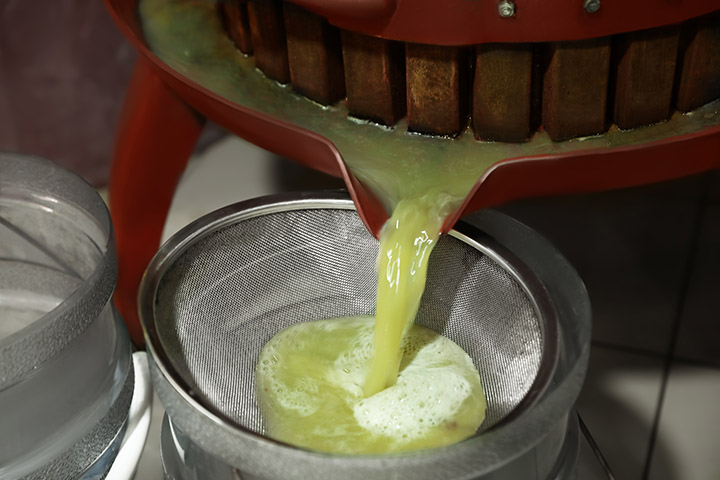
Juice Adjustments
In the case of lower than desired sugar levels, some chaptalization may be required. Simple white granulated sugar works very well and is easily dissolved in the juice prior to fermentation. There are many online chaptalization calculators that make it easier to calculate your sugar additions. For smaller batches, using grape juice concentrate in place of some of the sugar is also possible. I once used the concentrate from a 4-week Sauvignon Blanc wine kit to increase the body and potential alcohol level of a batch of Seyval Blanc I was making in my garage.
It is not uncommon for white hybrids to have high acid levels. There are a few ways to approach deacidification and the perception of acid in the wine. Deacidification may be approached in several ways:
• Chemical Deacidificaiton
This is where potassium bicarbonate or the double salt Acidex-type version are used pre-fermentation. In these cases, you may partially deacidify the whole batch of juice using potassium bicarbonate or completely deacidify a portion of the juice using the double salt version before filtering and returning it to the main portion of the juice. These methods require some practice to reduce any potential negative impact on juice character.
• During Fermentation
You may select a yeast that will metabolize some of the malic acid in the juice: 71B, Renaissance Allegro, Maurivin B, and Lalvin C are all good examples of malic-reducing yeasts.
• Post-Fermentation Malolactic Fermentation
This may also be considered as a form of deacidification. This technique is often associated with buttery Chardonnays, however, today it is possible to select a strain of malolactic bacteria that will not impart the diacetyl buttery notes. I like to use something like VP41 to preserve fruit character while reducing acidity.
• Cold Stabilizing
This is a technique where the wine is kept for a couple weeks just above freezing (32 °F/0 °C). It will reduce the risk of wine diamonds (tartrate crystals) forming in the bottle and will also reduce some of the acidity of the wine by dropping out some of those crystals of tartaric acid in the form of tartrates during bulk storage.
These techniques are not mutually exclusive, and a combination of these may be trialed to dial in your own protocols.
Perception of Acidity and Wine Style
In recent years, an array of winemaking tools based on extracts of inactivated yeasts have been developed. These are refined into products that may improve a wine’s character, assist with yeast fermentation nutrition, or feed malolactic bacteria. In the context of hybrid white winemaking, there are specific inactivated yeast products that may promote aromatics, improve mouthfeel, and reduce the perception of acidity. These work due to their high content of organic polysaccharides and mannoproteins that our mouths perceive as sweet or round in character. These products such as Opti White, Booster Blanc, and Noblesse may be added prior to fermentation to improve the character of the wine and to reduce or eliminate the need to use residual sugar in the wine. Some of these, such as Noblesse, may be used post-fermentation to correct any sharp edges in the wine and, at higher doses, to give the wine a perception of sweet character while the wine remains technically dry.
This approach is helpful to reduce the sugar content for our diabetic family members who enjoy moderate wine consumption. It also eliminates the risk of refermentation in the bottle that may occur if residual sugar remains in the wine.
There are tannins specifically for use with white wines that may be used during fermentation to enhance mouthfeel and to promote fruit character, FT BlancTM is one example. A low dose of 0.2–0.4 g/L (0.75–1.5 g/gallon) during fermentation can promote the aromatics that many white hybrids have as their signature feature and enhance mouthfeel.
Blending
One key advantage of home winemaking is that you are free from the constraints placed on commercial winemakers. You have the freedom to create multi-regional and multi-varietal blends. Once in my Montreal garage, I had some pails of Frontenac Blanc juice I had bought from a local winery. It tasted wonderful, had lovely aromatics, but the acid level was higher than I wanted. I went to my local home winemaking store and bought a couple pails of Pinot Gris stable juice. It was sourced from California and had comparatively low acid levels and the mild fruit character would not dominate the Frontenac. I combined these juice pails with the Frontenac Blanc juice and co-fermented them. The results were superb. You may also blend two or more dry wines together before bottling to achieve acid and flavor balance. Bench trials and tasting panels are recommended.
Lastly, if the above techniques and some aging time does not produce a wine that fits your particular desire, a sugar addition may be used. I recommend post-fermentation sugar additions as a tool of last resort because in a home winemaking context, stability and the risk of refermentation can be challenging to manage. Sterile filtering equipment adds additional cost and complexity, and the alternative use of potassium sorbate may not be desired by all winemakers.
Conclusion
It is difficult to produce a “one size fits all” protocol for all hybrid white grapes. However, some or all of these techniques may be considered as additions to your winemaking knowledge set for incorporation into your own home winemaking. Hybrid grape varietals represent a brave new world for winemakers and learning how to lean into their most desired character and how to manage their individual challenges can be a rewarding adventure for any home winemaker. You may even produce a truly unique and delicious wine that your friends and family will love. Your Frontenac Gris, Seyval Blanc, and Riesling blend may be the hit of the summer patio season.
